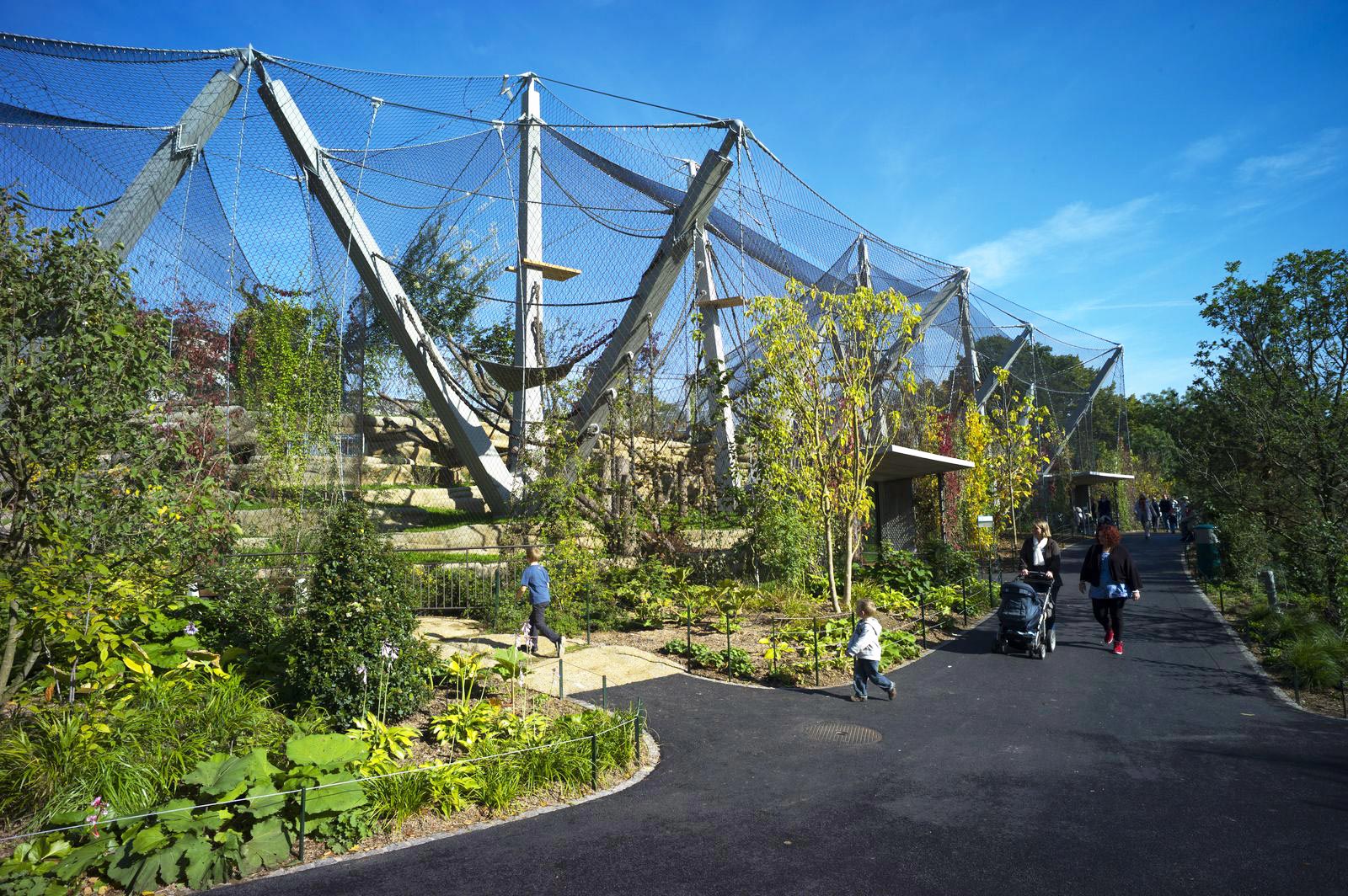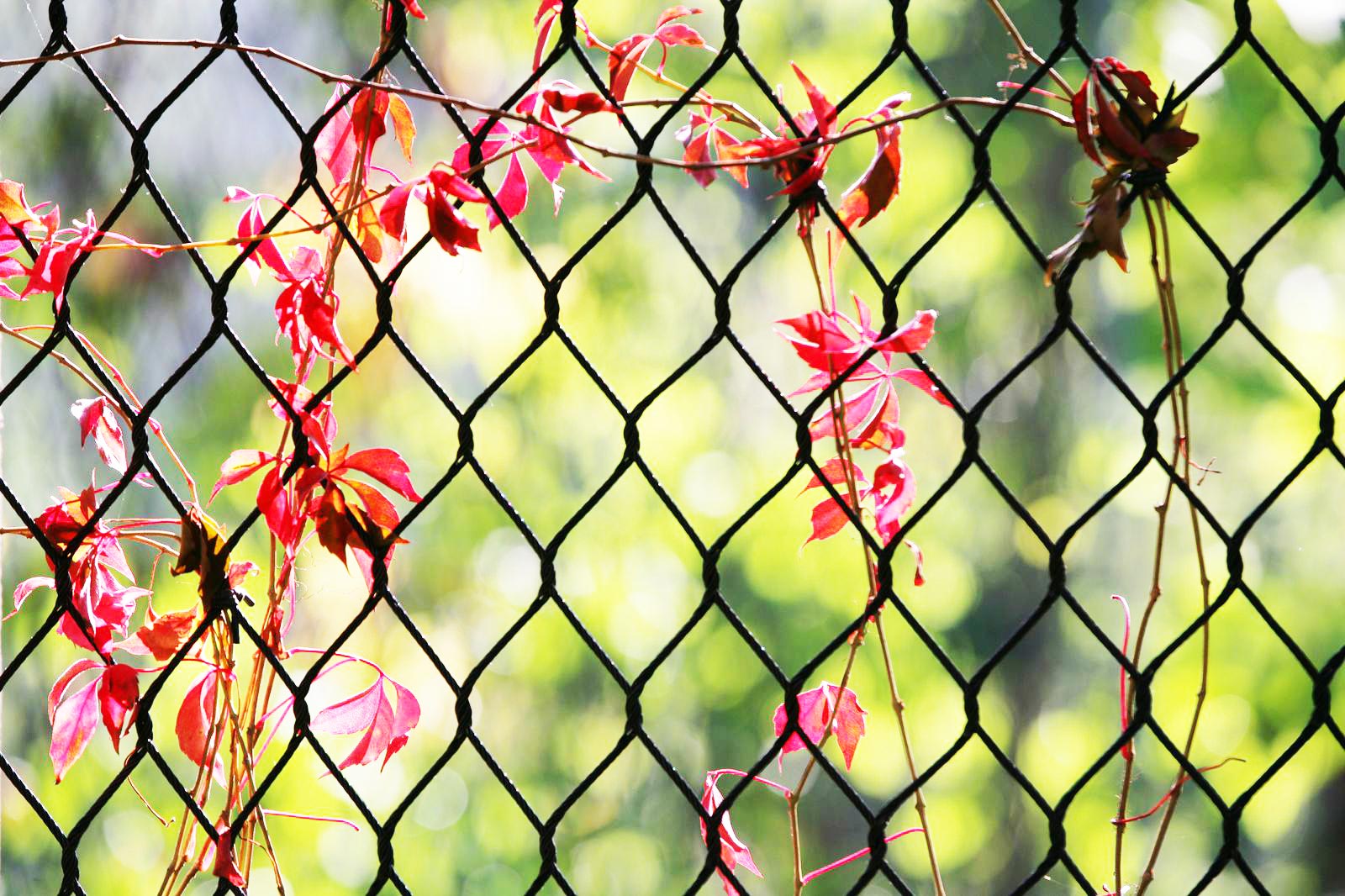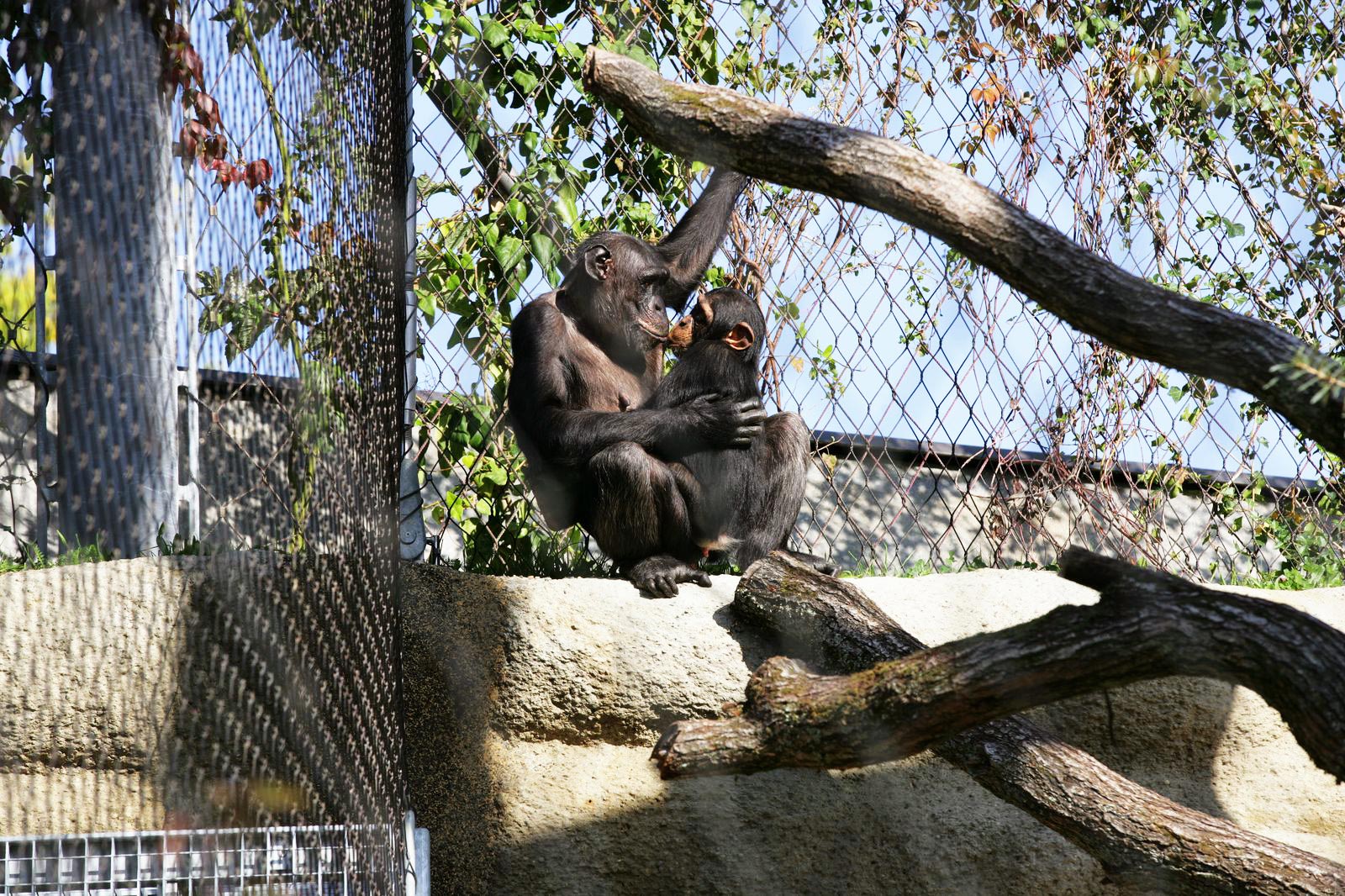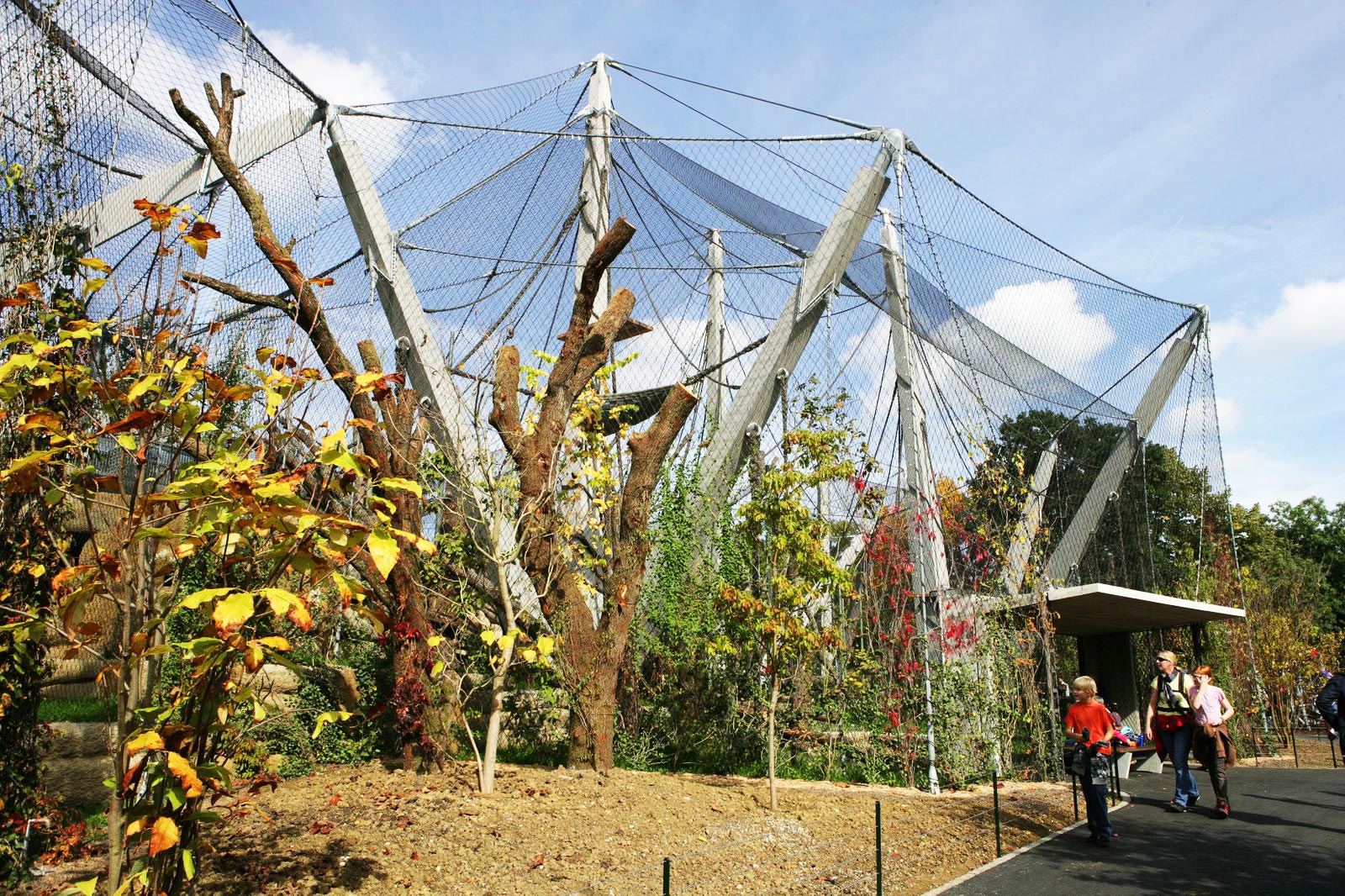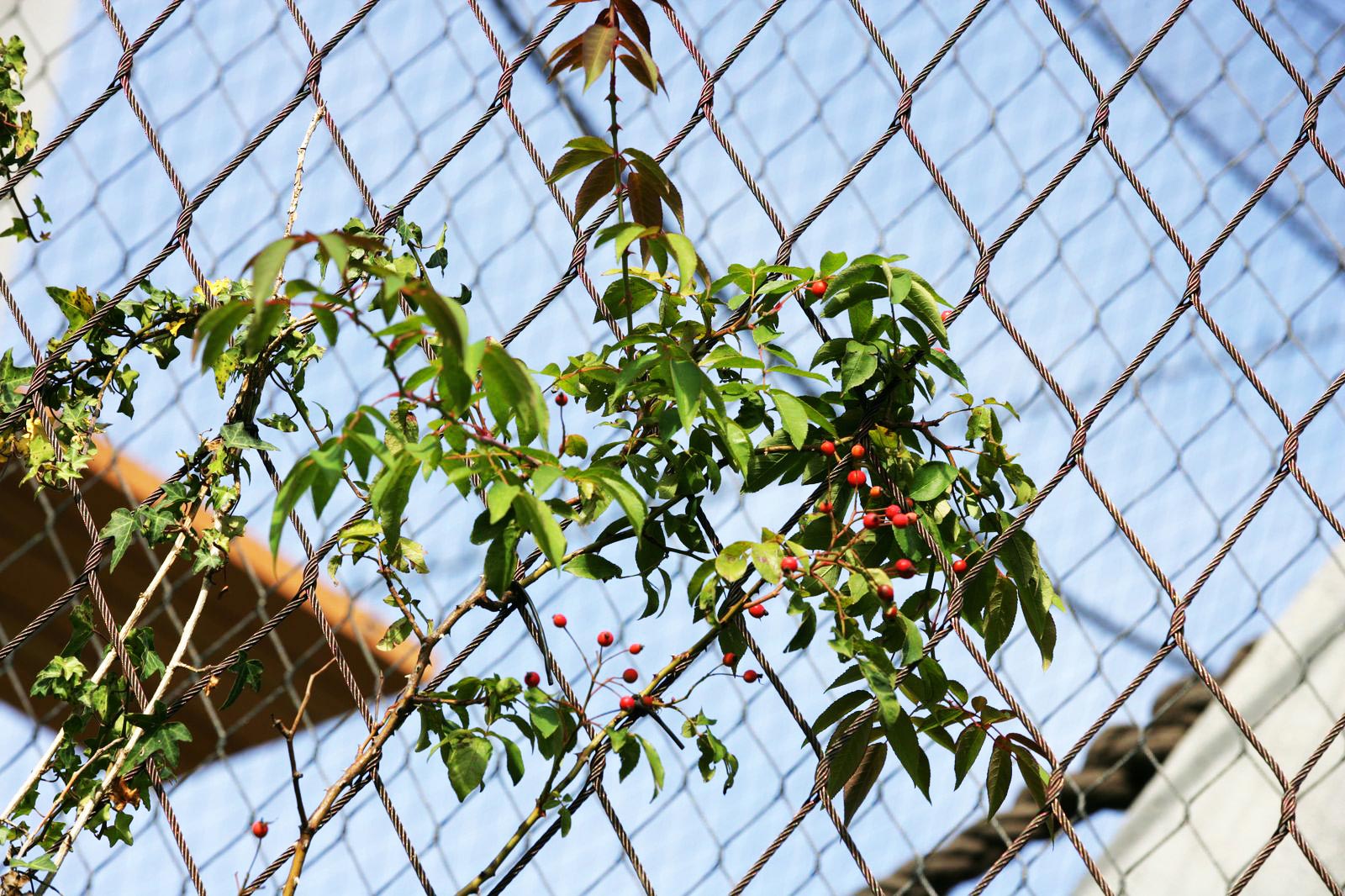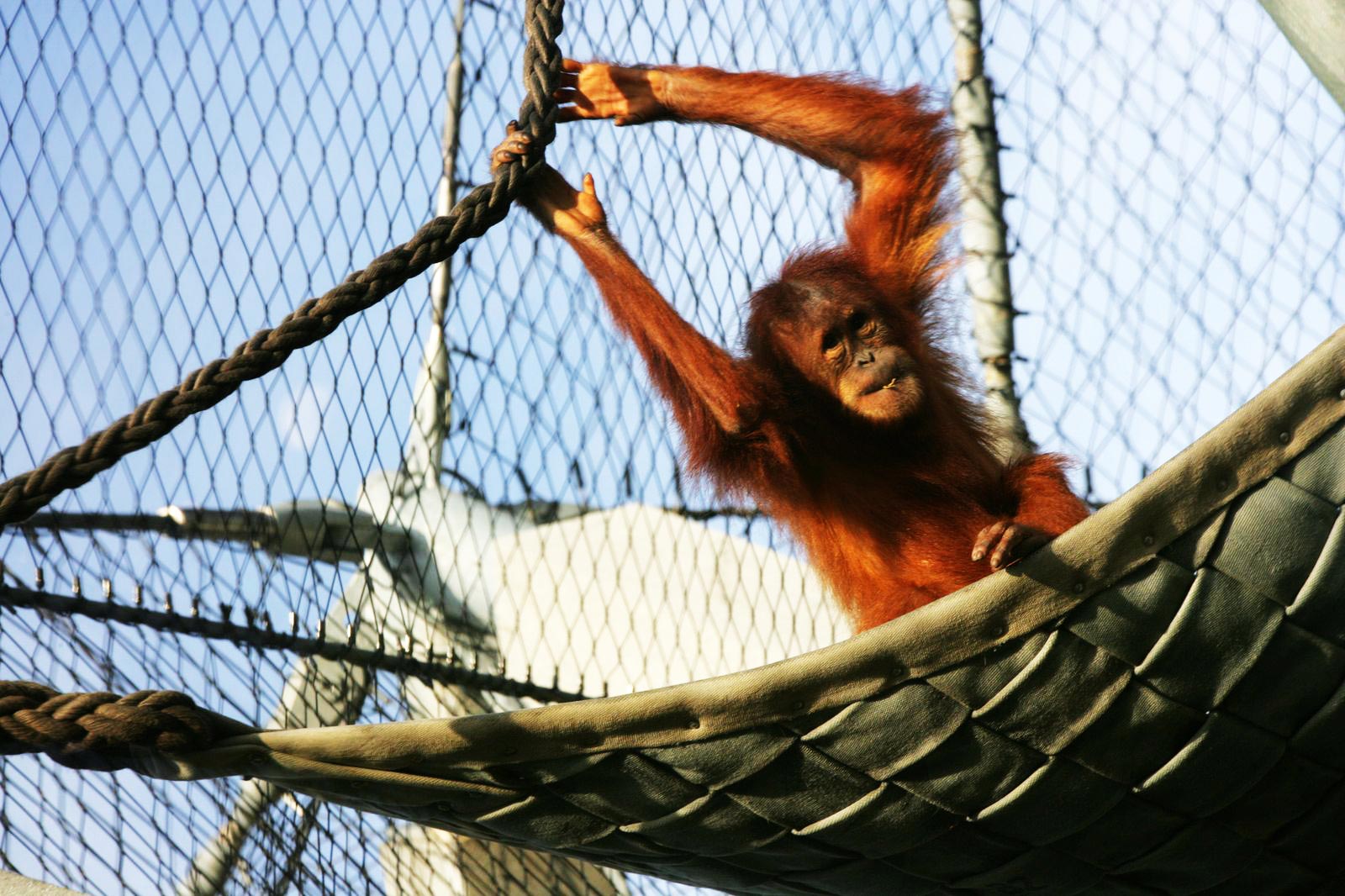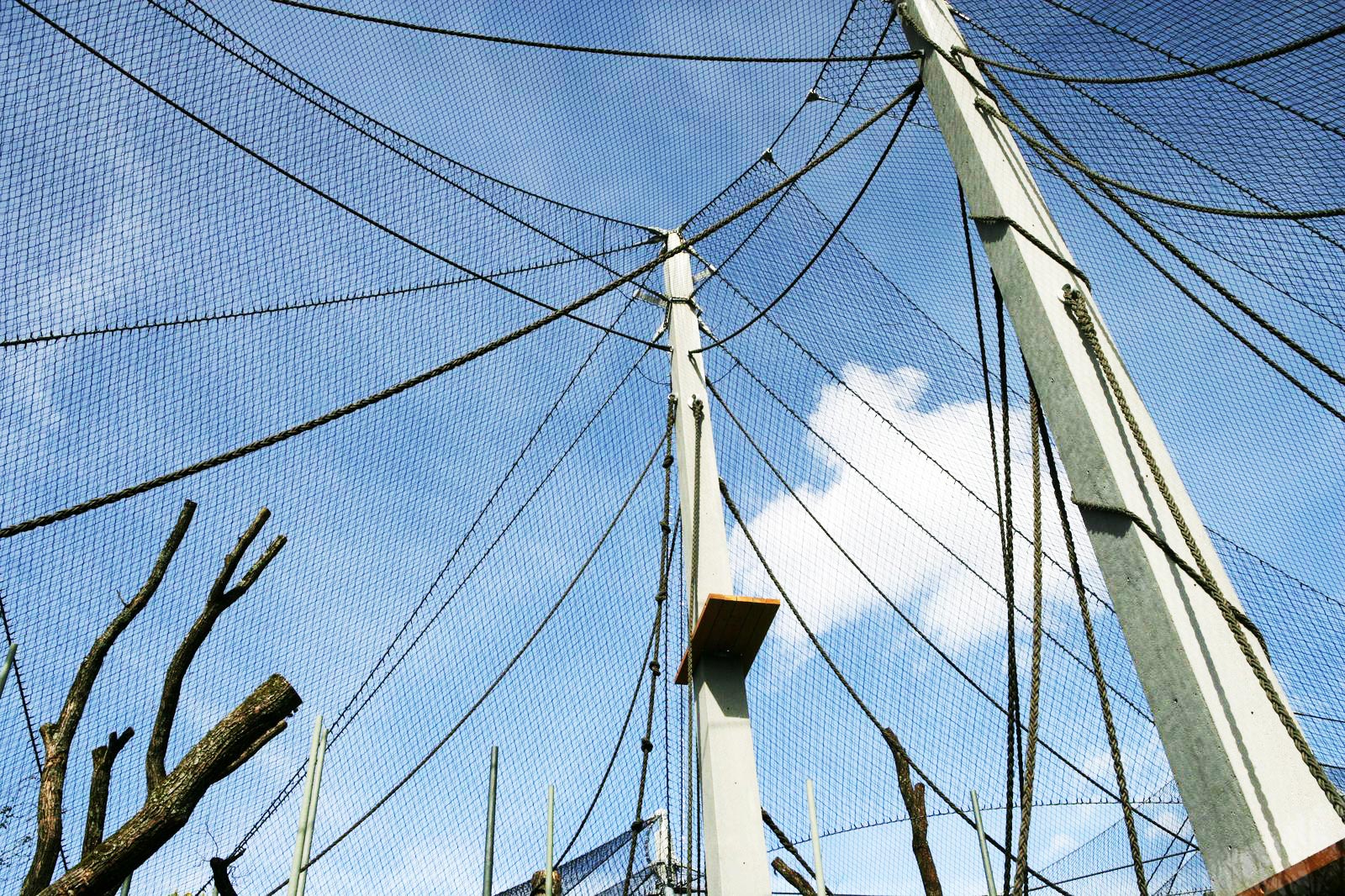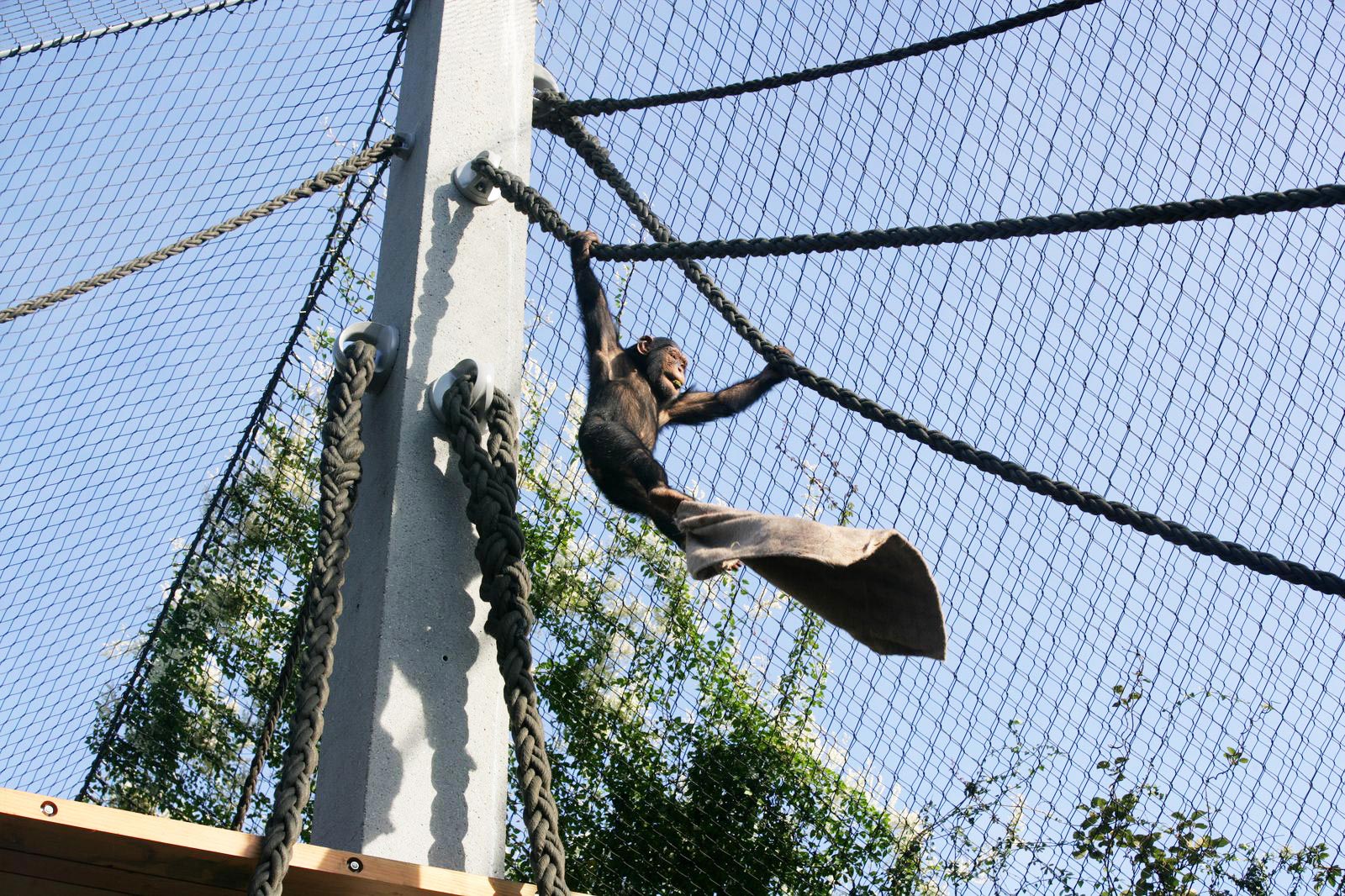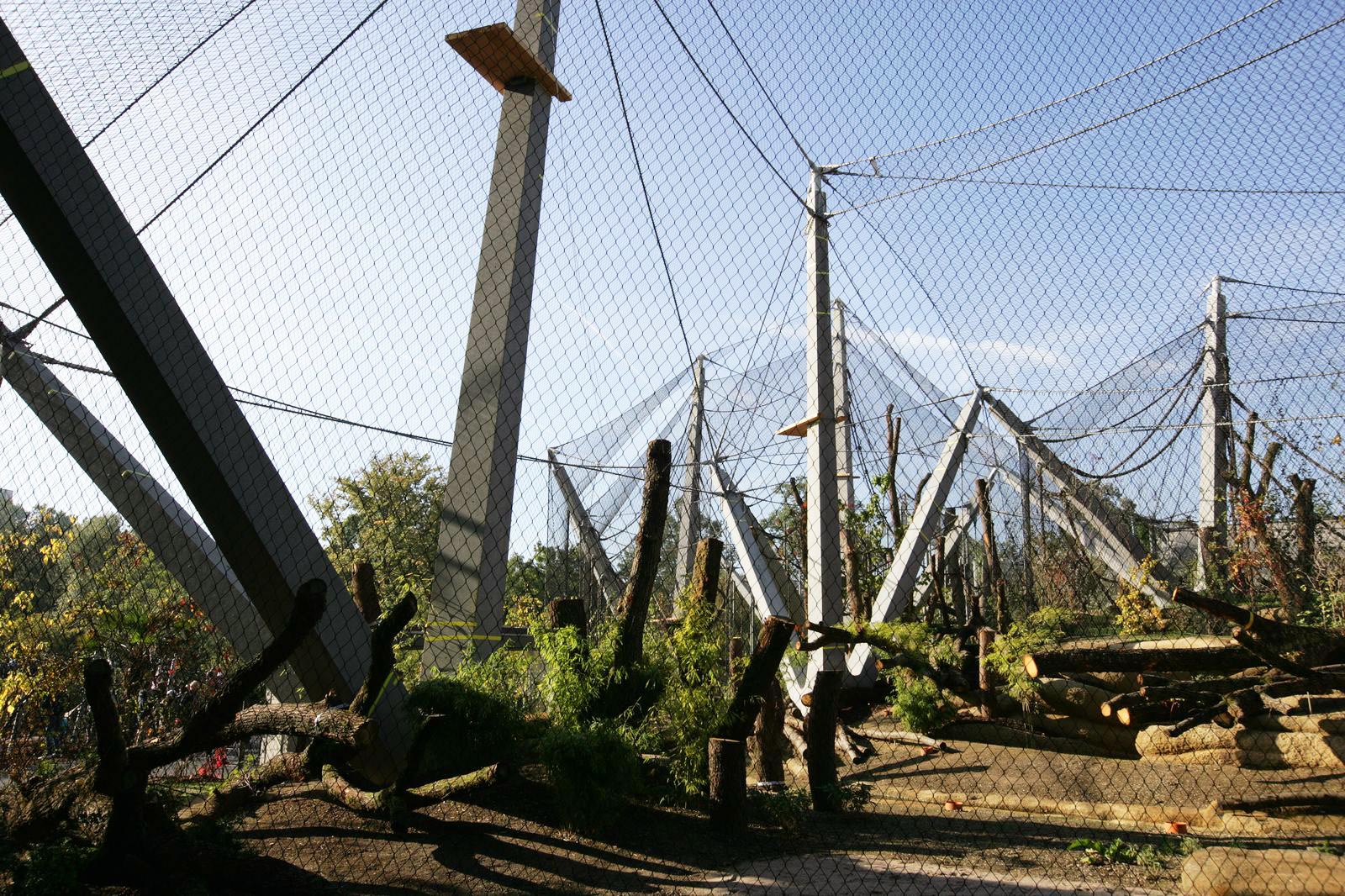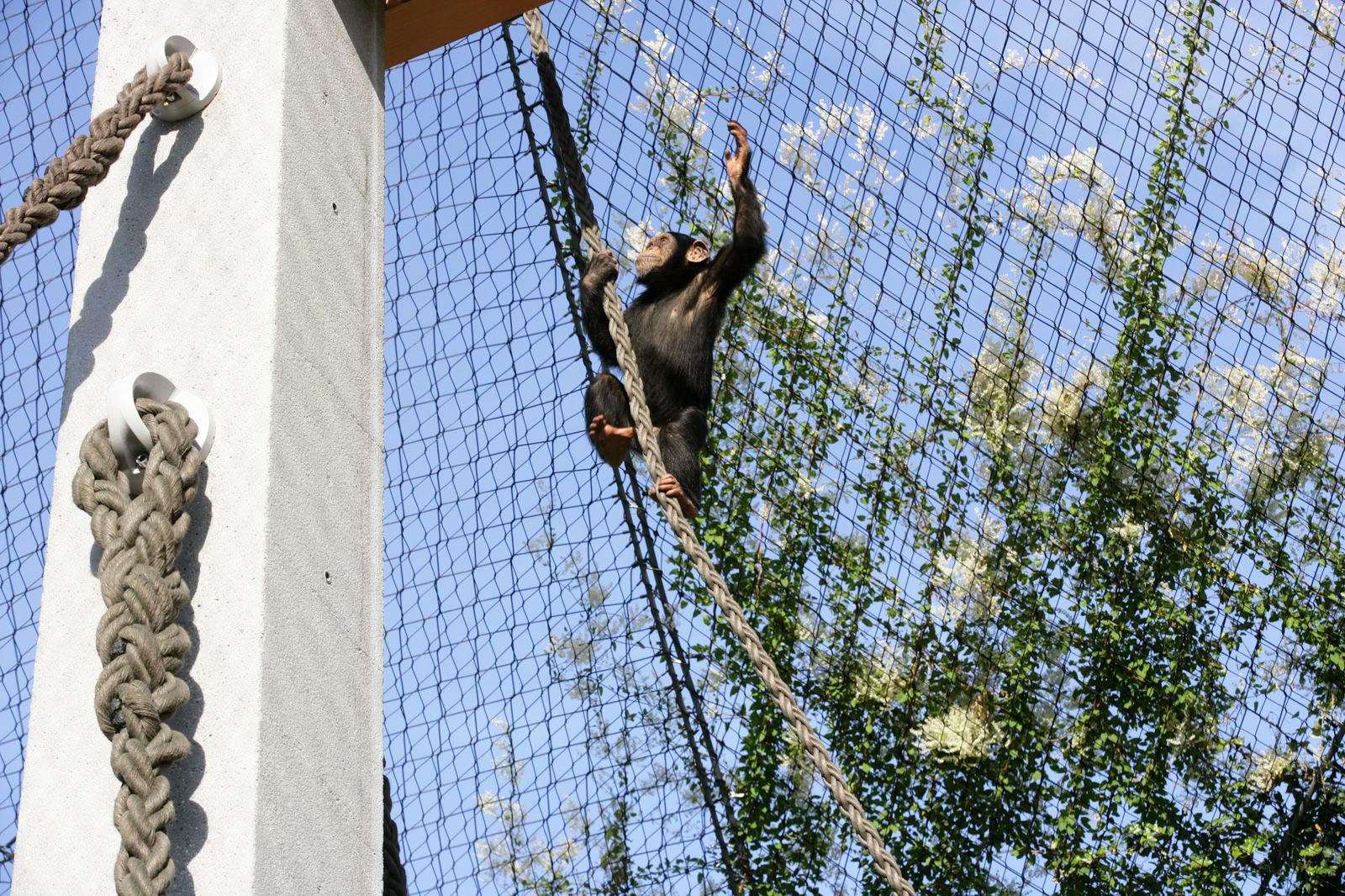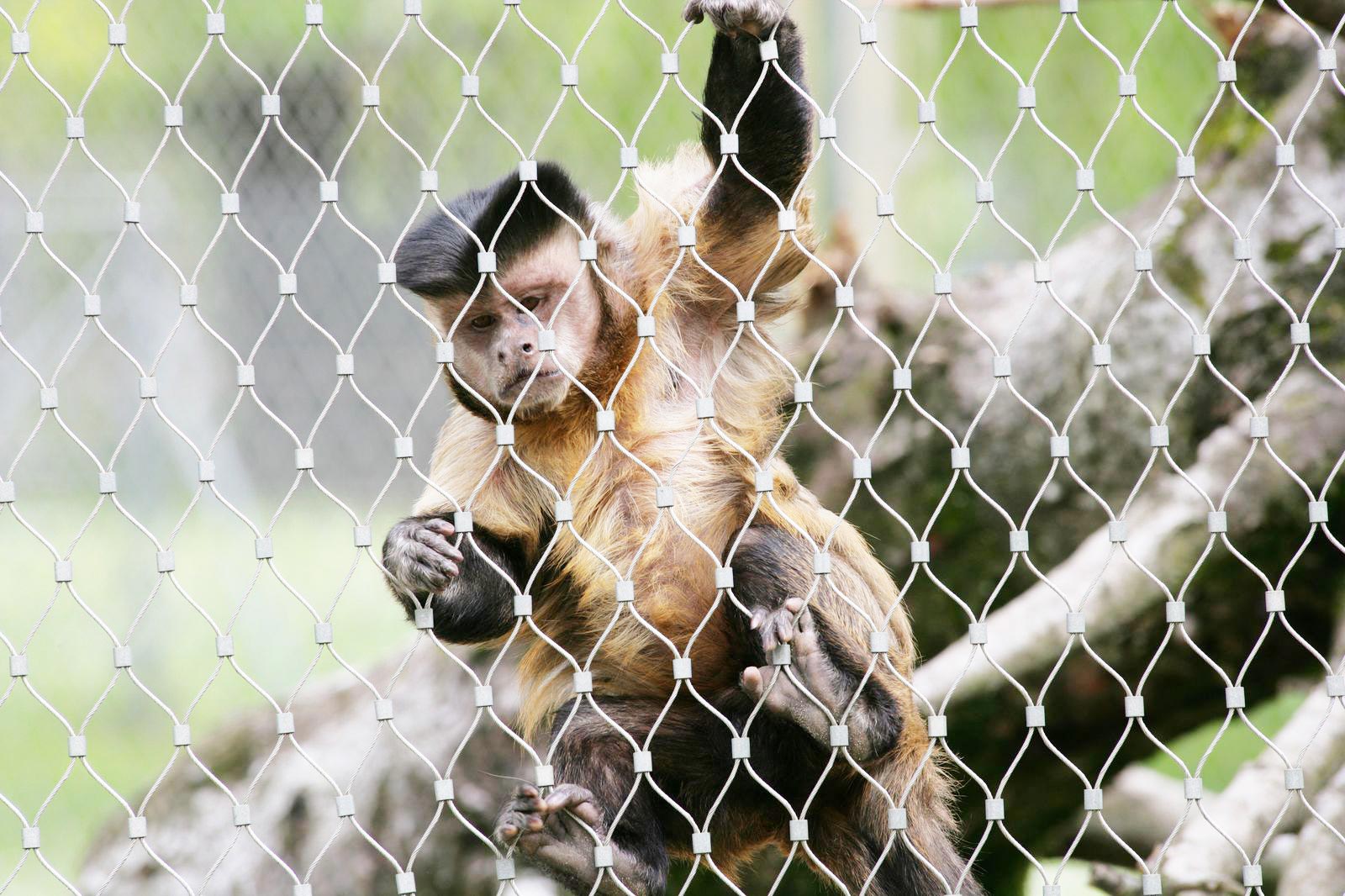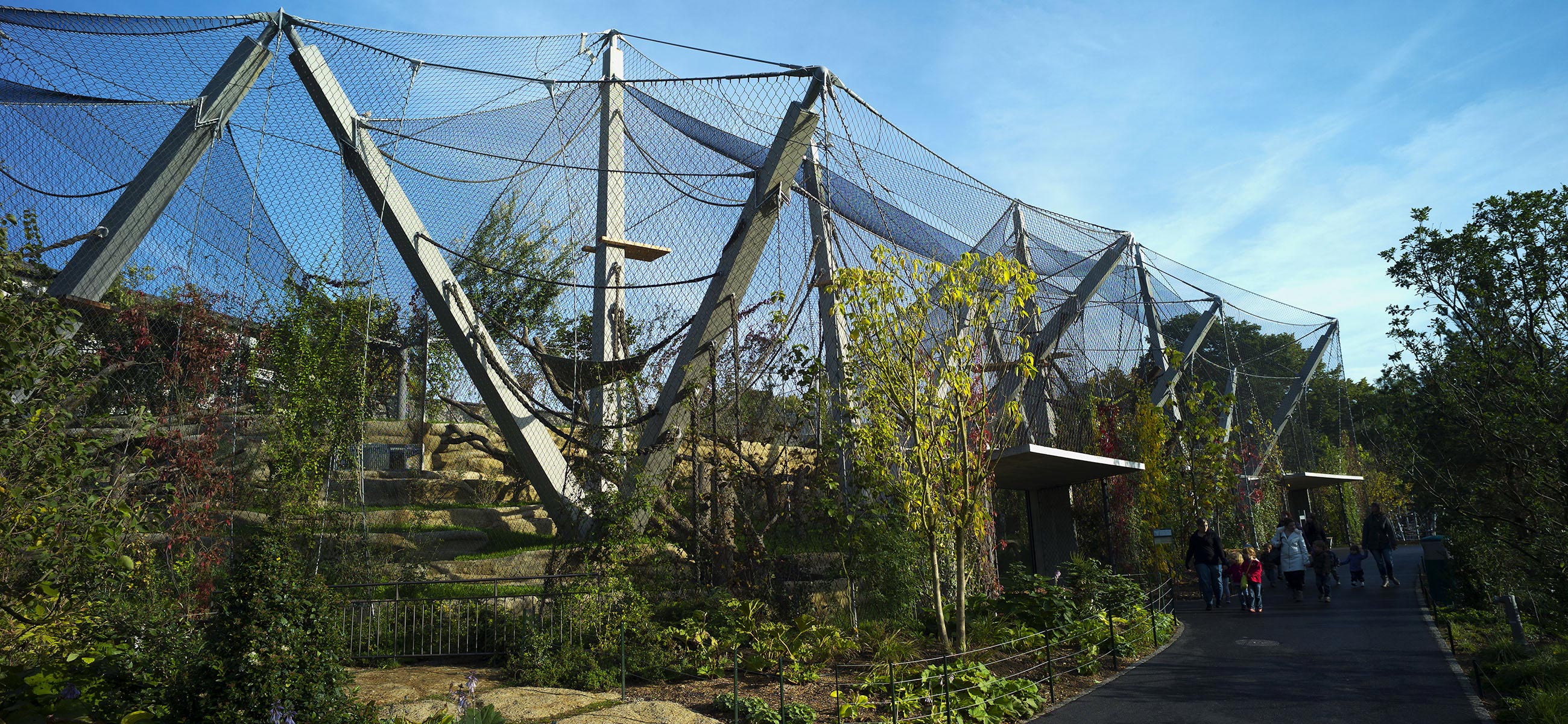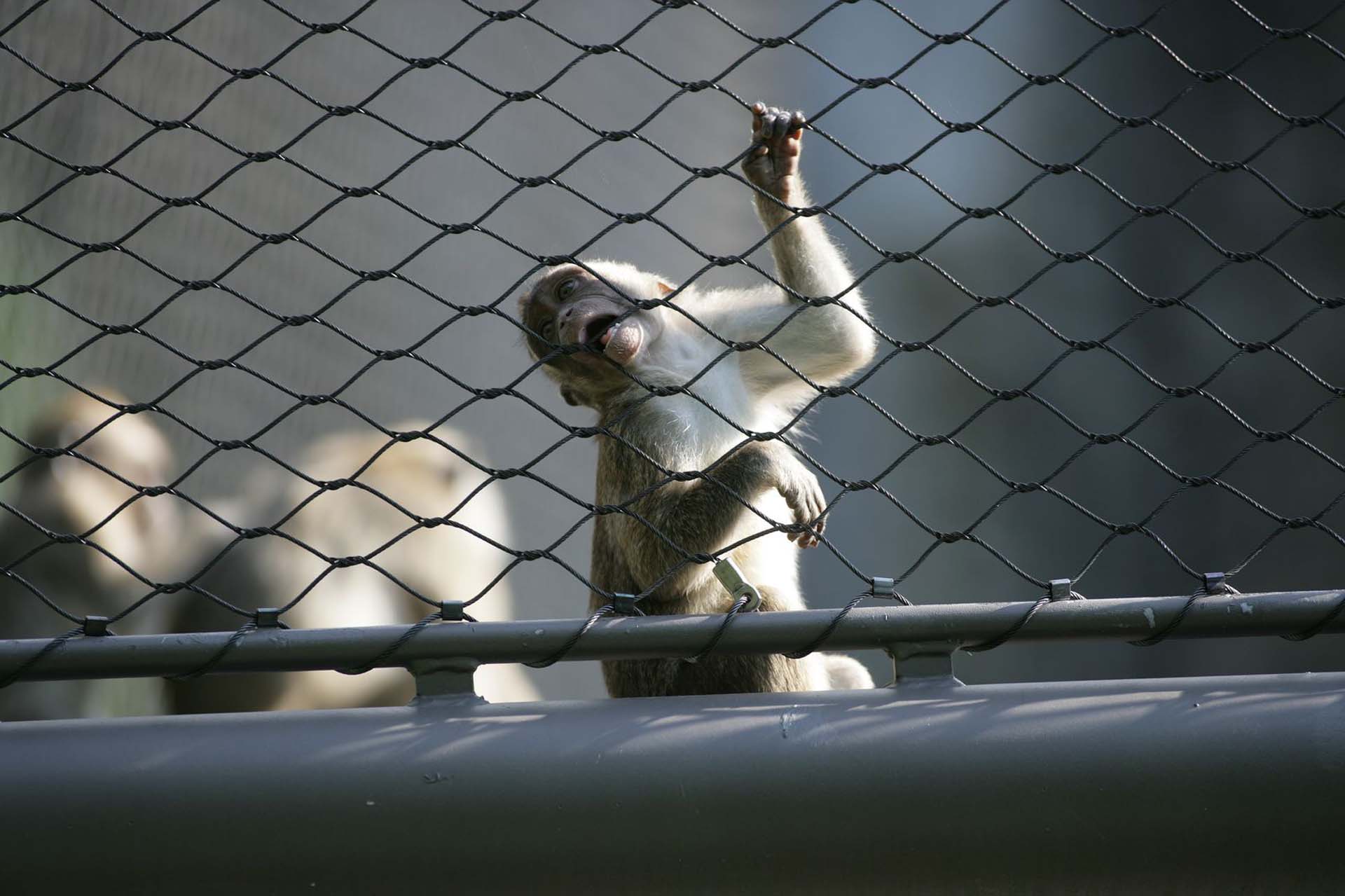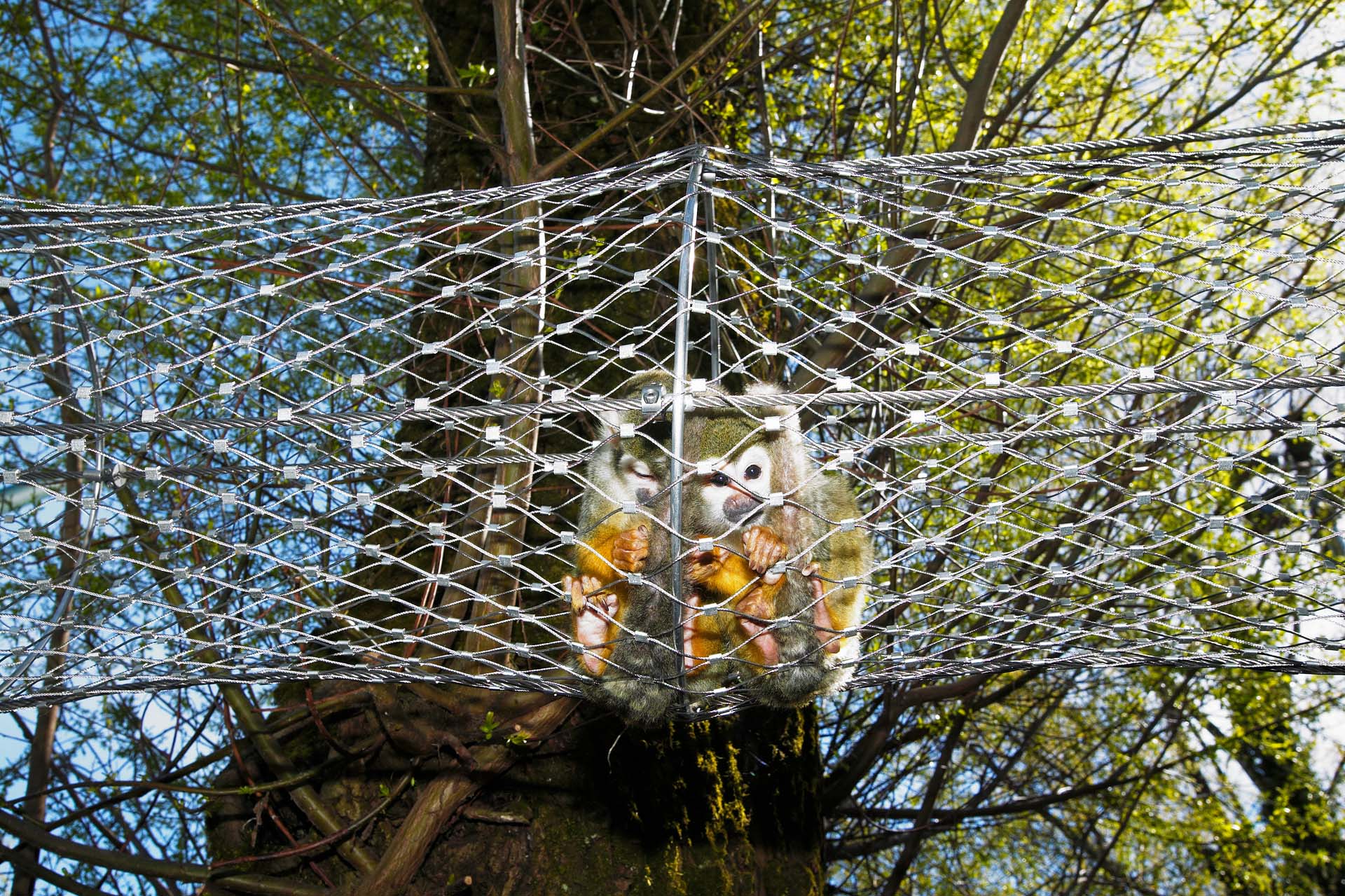A diverse environment for man and animal
Primate House Basel Zoo
In other words, a solution is sought that is durable, nearly invisible and yet is also sufficiently robust to withstand any possible aggressive behaviour on the part of the animals. The material for this is supplied by Jakob Rope Systems. Its wire net Webnet is woven out of flexible wire ropes and offers an architectonically highly attractive alternative to conventional structural barriers such as ditches, bars or glass plates. For precisely this reason, the Basel Zoo worked in collaboration with landscape planners (Schweingruber Zulauf, Zurich), architects (Peter Stirner, Basel), engineers (Conzett Bronzini Gartmann, Chur as well as Pfeifer Ingenieure, Konstanz) and Jakob Rope Systems to create an outdoor enclosure for primates and thereby set new standards.
Interaction Between Architecture and Species-Appropriate Enclosures
Five neighbouring, but spatially separated net tents were constructed on a surface of about 8,000 square metres. The properties of Webnet in this application is ideal for man and animal: The primary supporting structure for the nets is formed in each case by three-armed, heavily cantilevered, steel-reinforced concrete pylons, so-called tri-digits, which have a height of nearly 20 metres. They are securely anchored in the ground by means of a concrete foundation and underground bored piles reaching a depth of up to 17 metres. Depending on the size, two or three of these bundled supports are located in each enclosure and they are fully integrated in the enclosure design. This space-saving style of construction gives the animals a much larger living space and the supports and nets are used avidly by the monkeys for climbing. Another unique aspect is the double-layer design of the project. While the inner, fine-meshed net structure surrounds the actual animal enclosure, the outer shell serves as a climbing support for creepers and climbing plants. The resulting vertical green surfaces attaining a height of up to 20 metres not only provide a visual highlight, but also serve as a source of shade for the primates and imitate their natural, tropical habitat. In order to give zoo visitors views into the enclosure from different perspectives in spite of the lush green, specific areas were set aside for this purpose.
Rapid Implementation Thanks to Precision Dimensioning
A noteworthy aspect of the primate enclosure in Basel is also the manner in which it was implemented. After a precise determination of the net’s spatial geometry, the rope lengths and net sizes required for the realisation were calculated – including consideration of snow and wind loading. The ropes were fabricated in the Jakob Rope Systems factory to the exact dimensions. Thanks to this professional production approach, cost-intensive and complex cutting to size, fitting and readjusting of the nets on site was unnecessary. The assembly of the ropes and nets at the construction site was carried out by four employees of Jakob Rope Systems within only six months. The new primate enclosure in the Basel zoo underscores in exemplary fashion the advantages of Webnet in the construction of modern and attractive animal enclosures. They enable a space-saving design. They offer the highest level of transparency and visual airiness. They guarantee safety for man and animal and are attractive due to their low maintenance costs and longevity.
